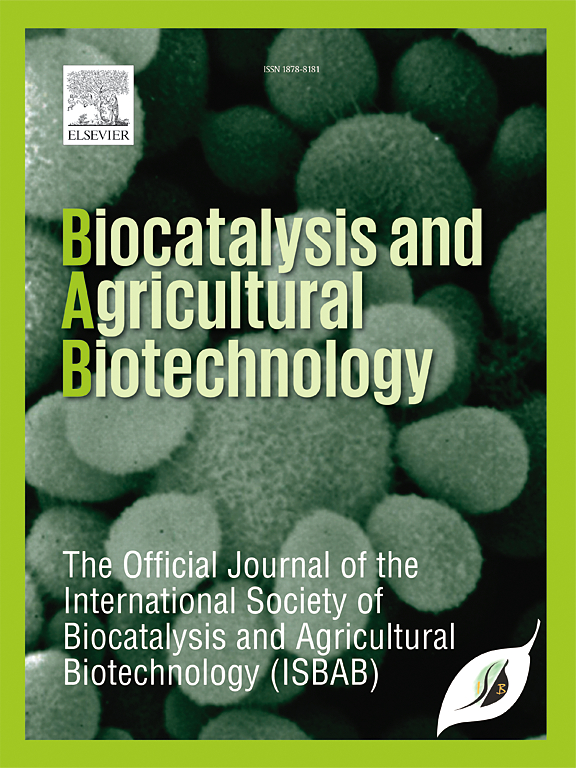Genetic diversity of cultivated Nigella sativa L. germplasm based on EST-SSR markers and agro-morphological traits
IF 3.4
Q2 BIOTECHNOLOGY & APPLIED MICROBIOLOGY
引用次数: 0
Abstract
Nigella sativa L. (Black cumin) has been extensively utilized in traditional medicine since ancient times. Researching genetic resources to identify the best germplasm for enhancing pharmaceutical properties is an important step in maximizing the potential of this beneficial plant. In this study, EST-SSR markers were designed and investigated alongside thymoquinone content and some important agro-morphological traits e.g., seed yield. After de novo transcriptome sequencing using the Illumina platform, data mining was performed to identify unigenes containing microsatellites using MISA software. Among 50 designed EST-SSR primers, 19 pairs reproduced polymorphic bands which were employed to estimate the genetic diversity of 32 accessions of black cumin provided from across the world. A total of 117 bands (75%) were polymorphic among 156 amplified bands. The PIC values varied from 0.47 (NS-587 and NS-183) to 0.69 (NS-242). The assessment of phytochemical variability and yield traits revealed a thymoquinone content of 0.1–1.38 %, a thousand-seed weight of 1.7–3.78 g, and a seed yield per plant of 0.28–1.74 g. Classification of accessions based on morphological traits resulted in three distinct clusters, while genetic analysis yielded four clusters. Notably, the high concordance between the morphological and genetic dendrograms indicated that the genetic loci targeted by EST-SSRs in this study can effectively represent key morphological traits. This study yielded valuable insights into the genetic diversity status of Nigella sativa, while also introduced some accessions for further breeding endeavors.

求助全文
约1分钟内获得全文
求助全文
来源期刊

Biocatalysis and agricultural biotechnology
Agricultural and Biological Sciences-Agronomy and Crop Science
CiteScore
7.70
自引率
2.50%
发文量
308
审稿时长
48 days
期刊介绍:
Biocatalysis and Agricultural Biotechnology is the official journal of the International Society of Biocatalysis and Agricultural Biotechnology (ISBAB). The journal publishes high quality articles especially in the science and technology of biocatalysis, bioprocesses, agricultural biotechnology, biomedical biotechnology, and, if appropriate, from other related areas of biotechnology. The journal will publish peer-reviewed basic and applied research papers, authoritative reviews, and feature articles. The scope of the journal encompasses the research, industrial, and commercial aspects of biotechnology, including the areas of: biocatalysis; bioprocesses; food and agriculture; genetic engineering; molecular biology; healthcare and pharmaceuticals; biofuels; genomics; nanotechnology; environment and biodiversity; and bioremediation.
 求助内容:
求助内容: 应助结果提醒方式:
应助结果提醒方式:


